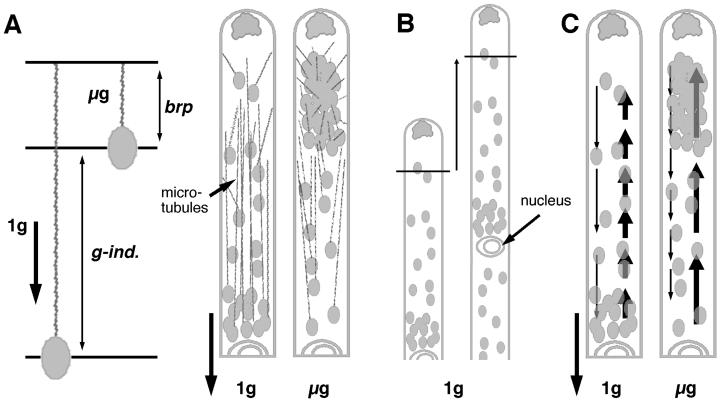Figure 7.
Two models of how plastid clusters develop in microgravity and the relationship between growth and plastid position. A, Model 1. Microtubules polymerize at a basal rate (brp) in microgravity (left). The pull of gravity on the plastid produces a g-induced strain (g-ind.) on the microtubule that stimulates polymerization. Microtubules are thus shorter in microgravity (μg) than on earth (1g), resulting in plastid clusters (right). B, Diagram showing that apical cells grow at the same rate that plastid zones and the nucleus move toward the tip. C, Model 2. Acropetal movement (bold arrows) is stronger than basipetal plastid movement (thinner arrows). The rate of plastid movement (arrow length) is faster basipetally than acropetally in upright cells due to gravity, but the reverse takes place in microgravity producing clusters.

